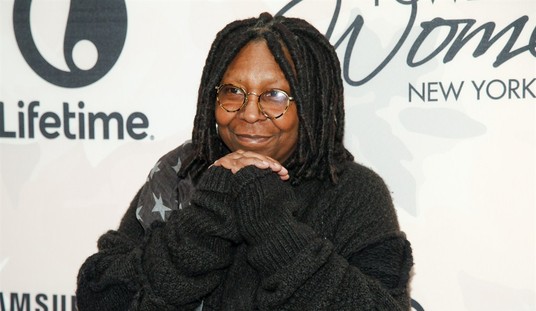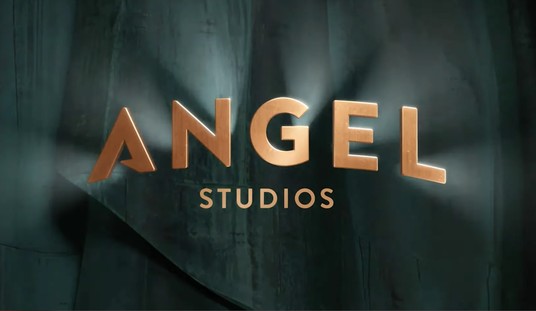We live in an era of disposable pop culture. All around us we see vapid reality series, uninspired (and uninspiring) music, movies that are little more than retreads of other bad ideas, and starlets who are famous merely for being famous. Of course, this stuff is not necessarily bad in and of itself — in fact, mindless pop culture can make for some great “guilty pleasure” moments.
The truth is, when any form of entertainment achieves excellence, we notice. Television programs like Mad Men and Friday Night Lights, music by artists such as Mumford & Sons and Zac Brown Band, and films like Lincoln and Les Miserables attract attention because they raise the bar in their genre.
The idea of excellence as something for which to strive goes back to the Bible. Jewish and Christian believers alike are aware of the admonishments in Scripture to give our all. In the book of Ecclesiastes, King Solomon advises:
Whatever your hand finds to do, do it with all your might, for in the realm of the dead, where you are going, there is neither working nor planning nor knowledge nor wisdom.
Ecclesiastes 9:10 (NIV)
And the Apostle Paul encourages the believers in Colosse:
And whatever you do, whether in word or deed, do it all in the name of the Lord Jesus, giving thanks to God the Father through him.
[…]
Whatever you do, work at it with all your heart, as working for the Lord, not for human masters, since you know that you will receive an inheritance from the Lord as a reward. It is the Lord Christ you are serving.
Walt Disney felt the pull to achieve excellence, in part because his name was on every product the studio created. He once said, “Anything that has a Disney name to it is something we feel responsible for.” He instilled the value of excellence in his staff as well — he once hailed his staff as “the ones who insist on doing something better and better.” A sign on a construction wall from my last trip to Walt Disney World expresses this value.
Everybody knows that the Disney Studios artists cut their teeth on animation. At first the cartoon shorts reflected the same crude gags and shortcut-laden techniques of all the other studios in the business, but Walt knew his studio was capable of more. So he added new innovations. Flowers and Trees was the first animated short to employ full Technicolor, and it won an Oscar. Three Little Pigs made use of a musical theme, created a mega-hit song in “Who’s Afraid of the Big Bad Wolf?” and won another Oscar. The Old Mill marked the debut of the multiplane camera (which simulated 3-D effects) and won yet another Oscar.
By the middle of the thirties, Walt made up his mind that his studio would create the first feature length animated picture: Snow White and the Seven Dwarfs. Walt strenuously watched over every detail of the film’s production, and it became a runaway hit. With Snow White and subsequent features (particularly Pinocchio, Fantasia, and Bambi), budget and time were no objects to Walt — much to the chagrin of his brother, Roy, who handled the studio’s finances. Instead, creating the perfect product mattered, and while many of these early films were not hits in their initial release, they eventually made profits and garnered respect and acclaim.
Later, Walt would turn his attention to live action films, and, when he was passionate about a project, he would exercise as much control as he could. This commitment to excellence didn’t always pay off, but the efforts produced classics like 20,000 Leagues Under The Sea, Swiss Family Robinson, and what many consider Walt’s masterpiece, Mary Poppins.
Today we can see a similar — if not greater — value of excellence in the works of Pixar, where computer animation is an art form. But Walt found an even greater, more exciting way to immerse guests into the worlds he envisioned.
Many people consider the Disney Parks to be Walt’s greatest legacy. In fact, he spent the last decade and a half of his life focusing on creating complete, immersive experiences for his guests. From Walt Disney’s initial vision to build a park where adults would have as much fun as their kids to the Imagineers’ continued creativity and use of innovative technology, the Disney Parks exemplify the commitment to excellence.
Initially, Walt’s idea for a theme park took root in the “daddy’s days” when he would take his daughters to amusement parks around Los Angeles on Sunday afternoons. Sitting on a bench waiting for his girls, Walt longed for a place where the entire family could have fun together, and he began to draw up plans for a small park across the street from the studio. It didn’t take long for his ideas to outgrow the land, and the company bought acreage in nearby Anaheim for Disneyland, which opened in 1955.
The vision for Disneyland shifted from just a Disney-themed amusement park to a destination where guests could forget the outside world once they entered the gates. Disney themed each attraction and every land of the park to the highest detail. Landscapers built an earthen berm to keep out the encroachment of the world. The park so successfully achieved its intent that respected members of the architectural community took note. Architect Charles Moore wrote:
…in an uncharitable sea of suburbia, Disney has created a place, indeed a whole public world, full of sequential occurrences, of big and little drama, of hierarchies of importance and excitement, with opportunities to respond at the speed of rocketing bobsleds (or rocketing rockets, for all that) or of horse-drawn streetcars.
Speaking at an urban design conference at Harvard in 1963, urban planner James Rouse said:
I hold a view that may be somewhat shocking to an audience as sophisticated as this: that the greatest piece of urban design in the United States today is Disneyland. If you think about Disneyland and think of its performance in relationship to its purpose, it’s meaning to people – more than that, it’s meaning to the process of development – you will find it the outstanding piece of urban design in the United States. It took an area of activity – the amusement park – and lifted it to a standard so high in its performance, in its respect for people, in its functioning for people, that it really does become a brand new thing. It fulfills all its functions it set out to accomplish, un-self-consciously, usefully, and profitably to its owners and developers. I find more to learn in the standards that have been set and in the goals that have been achieved in the development of Disneyland than in any other piece of physical development in the country.
But before long, Anaheim’s urban sprawl became too much, and Walt looked elsewhere to take his vision to the next level. The 27,000 acres the company purchased in central Florida allowed for ultimate control of the parks and their environs. Walt Disney World, which opened in 1971, also boasted creative new ideas and experimental technology. Disney even built an underground tunnel system at the Magic Kingdom which houses nearly all the “behind the scenes” systems and allows cast members access from one land of the park to another. Building three more parks in Florida has allowed Imagineers to raise the bar in terms of creativity and excellence.
Disney has also built parks in Paris, Tokyo, and Hong Kong, with plans on the books for a park in Shanghai. In each park, advances in technology allow for innovative, exciting experiences for new generations.
Cynics may scoff at what Disney has to offer, and some hardcore fans have such high standards that they constantly carp when Disney falls short, but the Disney Parks continue to raise the bar for excellence in family entertainment.
Disney’s passionate pursuit of perfection has inspired me my entire life. I grew up on the classic films — along with some of the more obscure ones. My family takes multi-generational trips just about every year to Walt Disney World. Disney culture is a huge part of who I am.
More than anything else, those Disney vacations motivate me to pursue excellence even more in my daily life. Seeing how the Imagineers take care of every detail, appreciating theming and decor that are second to none, immersing myself in all things Disney – every aspect of my time at Disney World invigorates me. Without fail, I come home from these trips inspired to aim for excellence at work, at home, in ministry, and in my writing and other creative endeavors. It’s the pop-culture version of a mountain-top experience, and it’s what Disney can do for anyone.










Join the conversation as a VIP Member